Category
Popular Articles
- AI (12)
- Android (38)
- App Suggest (4)
- Apple (15)
- Apple TV (2)
- Bluetooth (3)
- Cars (2)
- ChatGpt (1)
- Chrome (2)
- Did you know? (1)
- E-Commerce News (1)
- Ecommerce Websites business (7)
- Electronics Shopping (5)
- Fashion Tips (3)
- Gaming (4)
- Google Gemini (3)
- Hair Care Tips (2)
- How to (13)
- iCloud (1)
- Infotainment System (1)
- Iphone (101)
- Job Posting (1)
- Lifestyle (3)
- Mac (20)
- Mobile Games (1)
- Netflix (1)
- Online Shopping Websites (2)
- Personal Finance Management (3)
- Product Reviews (3)
- Roku TV (4)
- Samsung (9)
- Shopping Tips (10)
- Spotify (1)
- Tech (92)
- Windows 11 (18)
- Zero Waste (3)
Discounted Products
-
 Leo Creation 144 TC Cotton Double Jaipuri Prints Flat Bedsheet(Pack of 1, Blue, Gree, Red, Grey, Light Grey)
Leo Creation 144 TC Cotton Double Jaipuri Prints Flat Bedsheet(Pack of 1, Blue, Gree, Red, Grey, Light Grey)
₹2,999.00Original price was: ₹2,999.00.₹329.00Current price is: ₹329.00. -
 Home Garage 210 TC Cotton King Floral Fitted (Elastic) Bedsheet(Pack of 1, Grey)
Home Garage 210 TC Cotton King Floral Fitted (Elastic) Bedsheet(Pack of 1, Grey)
₹999.00Original price was: ₹999.00.₹299.00Current price is: ₹299.00. -
 Goodrik 140 TC Cotton Double 3D Printed Flat Bedsheet(Pack of 1, Brown)
Goodrik 140 TC Cotton Double 3D Printed Flat Bedsheet(Pack of 1, Brown)
₹499.00Original price was: ₹499.00.₹229.00Current price is: ₹229.00. -
 GLOBALSHOP 350 TC Microfiber Double Floral Flat Bedsheet(Pack of 1, Multicolor)
GLOBALSHOP 350 TC Microfiber Double Floral Flat Bedsheet(Pack of 1, Multicolor)
₹1,250.00Original price was: ₹1,250.00.₹263.00Current price is: ₹263.00. -
 RisingStar 250 TC Microfiber King Printed Fitted (Elastic) Bedsheet(Pack of 1, FITTED-ROUND-CIRCLES-PREMIUM)
RisingStar 250 TC Microfiber King Printed Fitted (Elastic) Bedsheet(Pack of 1, FITTED-ROUND-CIRCLES-PREMIUM)
₹2,299.00Original price was: ₹2,299.00.₹299.00Current price is: ₹299.00. -
 Home Garage 210 TC Cotton King Floral Fitted (Elastic) Bedsheet(Pack of 1, Fitted Black Green)
Home Garage 210 TC Cotton King Floral Fitted (Elastic) Bedsheet(Pack of 1, Fitted Black Green)
₹1,299.00Original price was: ₹1,299.00.₹299.00Current price is: ₹299.00. -
 Home Garage 180 TC Cotton King 3D Printed Flat Bedsheet(Pack of 1, White)
Home Garage 180 TC Cotton King 3D Printed Flat Bedsheet(Pack of 1, White)
₹999.00Original price was: ₹999.00.₹229.00Current price is: ₹229.00. -
 Home Sizzler 153 cm (5 ft) Polyester Room Darkening Window Curtain (Pack Of 2)(Floral, Maroon)
Home Sizzler 153 cm (5 ft) Polyester Room Darkening Window Curtain (Pack Of 2)(Floral, Maroon)
₹799.00Original price was: ₹799.00.₹299.00Current price is: ₹299.00. -
 Panipat Textile Hub 152.4 cm (5 ft) Polyester Window Curtain (Pack Of 2)(Solid, Aqua)
Panipat Textile Hub 152.4 cm (5 ft) Polyester Window Curtain (Pack Of 2)(Solid, Aqua)
₹1,899.00Original price was: ₹1,899.00.₹299.00Current price is: ₹299.00. -
 Home Sizzler 214 cm (7 ft) Polyester Semi Transparent Door Curtain (Pack Of 2)(Floral, Maroon)
Home Sizzler 214 cm (7 ft) Polyester Semi Transparent Door Curtain (Pack Of 2)(Floral, Maroon)
₹1,199.00Original price was: ₹1,199.00.₹399.00Current price is: ₹399.00. -
 Home Sizzler 153 cm (5 ft) Polyester Room Darkening Window Curtain (Pack Of 2)(Floral, Brown)
Home Sizzler 153 cm (5 ft) Polyester Room Darkening Window Curtain (Pack Of 2)(Floral, Brown)
₹799.00Original price was: ₹799.00.₹299.00Current price is: ₹299.00. -
 Stella Creations 214 cm (7 ft) Polyester Room Darkening Door Curtain (Pack Of 2)(Abstract, Brown)
Stella Creations 214 cm (7 ft) Polyester Room Darkening Door Curtain (Pack Of 2)(Abstract, Brown)
₹1,299.00Original price was: ₹1,299.00.₹449.00Current price is: ₹449.00. -
 Homefab India 152.5 cm (5 ft) Polyester Room Darkening Window Curtain (Pack Of 2)(Floral, Light Blue)
Homefab India 152.5 cm (5 ft) Polyester Room Darkening Window Curtain (Pack Of 2)(Floral, Light Blue)
₹1,199.00Original price was: ₹1,199.00.₹319.00Current price is: ₹319.00. -
 Urban Home 214 cm (7 ft) PVC Transparent Door Curtain Single Curtain(Solid, Off White)
Urban Home 214 cm (7 ft) PVC Transparent Door Curtain Single Curtain(Solid, Off White)
₹699.00Original price was: ₹699.00.₹203.00Current price is: ₹203.00. -
 Panipat Textile Hub 213 cm (7 ft) Polyester Door Curtain (Pack Of 2)(Solid, Brown)
Panipat Textile Hub 213 cm (7 ft) Polyester Door Curtain (Pack Of 2)(Solid, Brown)
₹1,199.00Original price was: ₹1,199.00.₹349.00Current price is: ₹349.00.
Affiliate Links
Promotion
Switching from Android to iPhone can feel like stepping into a whole new world. If you’ve been using Android for years, you’ve likely grown used to its customization options, wide variety of hardware, and the way Google services integrate seamlessly into everything you do. But if you’re thinking about making the switch to iPhone, you may be both excited and nervous. Will it be worth it? How different is iOS compared to Android? Will you miss certain features?
As someone who’s been through this switch myself, let me walk you through everything you need to know before making the jump. By the end of this guide, you’ll have a clearer idea of what to expect—and whether an iPhone is the right move for you.
1. The Apple Ecosystem: Where iPhone Truly Shines
One of the biggest reasons people switch to iPhone is the Apple ecosystem. Unlike Android, where different manufacturers (Samsung, Google, OnePlus, etc.) offer devices, Apple controls the hardware and software for all its devices.
This means your iPhone can easily connect with a MacBook, iPad, Apple Watch, AirPods, or even Apple TV. Features like AirDrop, Handoff, Continuity Camera, and Universal Clipboard make life easier. For example, you can copy text on your iPhone and paste it instantly on your Mac. Or start an email on your phone and finish it on your iPad.
If you already own other Apple products—or are planning to—this seamless integration is a game-changer.
2. The Learning Curve: Simplicity Over Customization
If you’ve been on Android for years, you know how much customization it offers. Widgets, themes, third-party app stores, and launchers give Android a personality that matches its users. iPhones, on the other hand, are designed for simplicity.
iOS doesn’t allow the same level of deep customization. Yes, you can add widgets, change your wallpaper, and organize apps, but you won’t be able to completely redesign your interface the way you could on Android.
For some, this feels restrictive. For others, it’s refreshing. The simplicity means fewer settings to mess up and a consistent experience across all iPhones.
3. Data Transfer: Moving from Android to iPhone
Apple makes it surprisingly easy to transfer your data from Android to iPhone using the Move to iOS app. With this free app, you can move your contacts, messages, photos, videos, bookmarks, and more during setup.
However, some things don’t transfer as smoothly. For example:
- WhatsApp chat history may require extra steps depending on your country.
- Certain Android-only apps won’t be available on iOS.
- Files stored in Google Drive or other cloud services need to be re-downloaded.
The good news is that most popular apps (Facebook, Instagram, Spotify, YouTube, etc.) work exactly the same on both platforms.
4. Hardware Quality and Design
One thing you’ll immediately notice is the premium build quality of iPhones. Apple has always focused on design—whether it’s the glass back, aluminum frame, or the feel of the buttons. While many Android flagships also look and feel great, iPhones maintain a consistency in design that feels timeless.
Another difference is longevity. iPhones receive software updates for 5–7 years, which is far longer than most Android devices. So even if you buy an iPhone today, you can expect it to stay updated for years to come.
5. The Camera Experience
If you love photography, the iPhone will not disappoint. While Android phones (especially Samsung and Google Pixel) offer incredible cameras, iPhones are known for their consistency, natural colors, and video quality.
iPhones also integrate features like Cinematic Mode, ProRAW, and ProRes video recording, which are especially loved by creators. Even if you’re not a professional, you’ll likely find the camera experience on iPhone easy, reliable, and fun.
6. Battery Life and Charging
Battery life varies between iPhone models, but in general, Apple has caught up to Android. The newer iPhones offer all-day battery life for most users.
However, here’s something you’ll need to adjust to: charging speeds. Many Android devices support super-fast charging (some over 65W or even 100W). iPhones, on the other hand, usually max out at 20W with wired charging. That means Android phones may charge much faster.
On the plus side, iPhones now support MagSafe wireless charging, which makes charging more convenient with magnetic accessories.
7. eSIM vs Physical SIM
If you’re switching from Android in the U.S., you’ll need to know that newer iPhones are eSIM-only. That means there’s no physical SIM card slot anymore. While this gives you more flexibility in managing carriers digitally, it may feel unfamiliar at first if you’re used to popping SIM cards in and out.
Check with your carrier to ensure they support eSIM before switching.
8. Price: A Reality Check
Let’s be honest—iPhones are expensive. While some Android brands offer budget-friendly models, Apple tends to stay on the premium side. However, you do get strong resale value, meaning you can often sell your old iPhone for a good price when upgrading.
If you’re on a budget, consider older iPhones (like the iPhone 14 or 15) or refurbished models. They still offer excellent performance at a lower price point.
9. App Store vs Google Play
iOS apps generally go through a stricter approval process than Android apps, which means they tend to be more secure and polished. Some apps and features even come to iOS first before Android.
That said, the App Store doesn’t allow sideloading (installing apps from outside sources) the way Android does. If you rely on niche or third-party apps, you may miss that flexibility.
10. Privacy and Security
Apple places a huge emphasis on privacy. From App Tracking Transparency to Face ID security, you’ll notice that Apple asks for your permission before apps track your activity. While Android has improved a lot in this area, Apple markets itself as the leader in privacy protection.
For users who care deeply about keeping their personal data secure, this is a major selling point.
11. What You’ll Miss from Android
While iPhones are great, there are a few things you might miss from your Android device:
- Headphone jack (long gone on iPhone)
- Expandable storage with microSD cards
- High-resolution displays (some Android phones boast 4K screens)
- Fast charging and bigger batteries
- Split-screen multitasking
If these features matter a lot to you, keep them in mind before switching.
Final Thoughts: Should You Switch to iPhone?
Switching from Android to iPhone is a big decision, but it ultimately comes down to your priorities. If you want seamless integration with other Apple devices, consistent updates, excellent cameras, and strong privacy protections, the iPhone is a fantastic choice.
On the other hand, if you love heavy customization, ultra-fast charging, and budget-friendly options, you may find Android still fits your lifestyle better.
The best way to decide? Try using an iPhone for a week (perhaps by borrowing one or buying from a retailer with a return policy). That experience will show you whether iOS feels natural—or if Android is still the right place for you.
Written by Bazaronweb
Latest Tech Articles
- 5 Ways to Backup and Restore Registry Settings in Windows
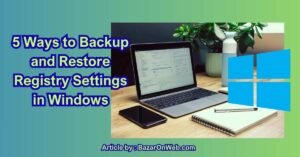
- iMessage Not Syncing Between iPhone & Mac? 8 Proven Ways to Fix Account & Device Issues
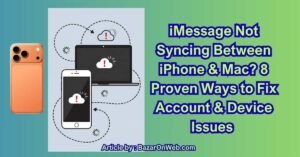
- Outlook Not Receiving Emails? 8 Proven Fixes for Windows, Mac & Mobile

- Zoom Not Connecting? 7 Ways to Fix Meeting Join Errors on Windows & Mac

- Microsoft Teams Not Opening? 5 Proven Fixes to Restart Your Workspace
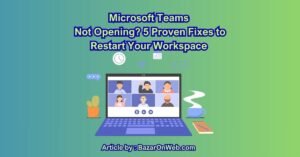
Products
-
![Apple Watch Ultra 3 [GPS + Cellular 49mm] Running & Multisport Smartwatch w/Rugged Titanium Case w/Black Titanium Milanese Loop - M. Satellite Communications, Advanced Health & Fitness Tracking](https://bazaronweb.com/retailstores/wp-content/uploads/2025/09/apple-watch-320x320.jpg) Apple Watch Ultra 3 [GPS + Cellular 49mm] Running & Multisport Smartwatch w/Rugged Titanium Case w/Black Titanium Milanese Loop - M. Satellite Communications, Advanced Health & Fitness Tracking
Apple Watch Ultra 3 [GPS + Cellular 49mm] Running & Multisport Smartwatch w/Rugged Titanium Case w/Black Titanium Milanese Loop - M. Satellite Communications, Advanced Health & Fitness Tracking
-
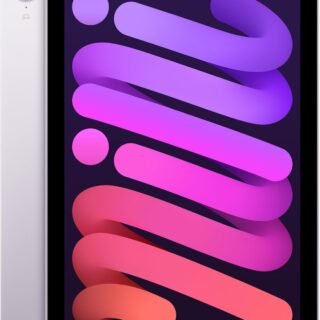 Apple iPad mini (A17 Pro): Apple Intelligence, 8.3-inch Liquid Retina Display, 256GB, Wi-Fi 6E, 12MP Front/12MP Back Camera, Touch ID, All-Day Battery Life — Purple
Apple iPad mini (A17 Pro): Apple Intelligence, 8.3-inch Liquid Retina Display, 256GB, Wi-Fi 6E, 12MP Front/12MP Back Camera, Touch ID, All-Day Battery Life — Purple
-
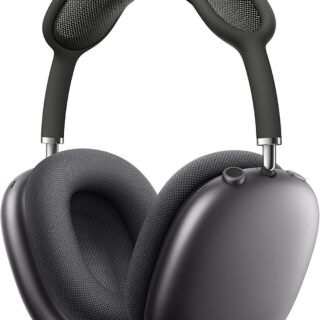 Apple AirPods Max Wireless Over-Ear Headphones, Active Noise Cancelling, Transparency Mode, Personalized Spatial Audio, Dolby Atmos, Bluetooth Headphones for iPhone – Space Gray
Apple AirPods Max Wireless Over-Ear Headphones, Active Noise Cancelling, Transparency Mode, Personalized Spatial Audio, Dolby Atmos, Bluetooth Headphones for iPhone – Space Gray
-
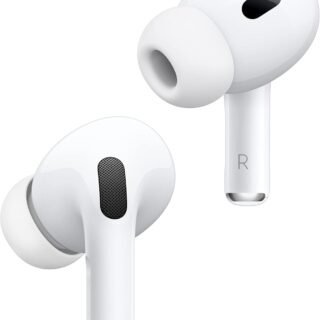 Apple AirPods Pro 2 Wireless Earbuds, Active Noise Cancellation, Hearing Aid Feature, Bluetooth Headphones, Transparency, Personalized Spatial Audio, High-Fidelity Sound, H2 Chip, USB-C Charging
Apple AirPods Pro 2 Wireless Earbuds, Active Noise Cancellation, Hearing Aid Feature, Bluetooth Headphones, Transparency, Personalized Spatial Audio, High-Fidelity Sound, H2 Chip, USB-C Charging
-
 Leo Creation 144 TC Cotton Double Jaipuri Prints Flat Bedsheet(Pack of 1, Blue, Gree, Red, Grey, Light Grey)
Leo Creation 144 TC Cotton Double Jaipuri Prints Flat Bedsheet(Pack of 1, Blue, Gree, Red, Grey, Light Grey)
₹2,999.00Original price was: ₹2,999.00.₹329.00Current price is: ₹329.00.
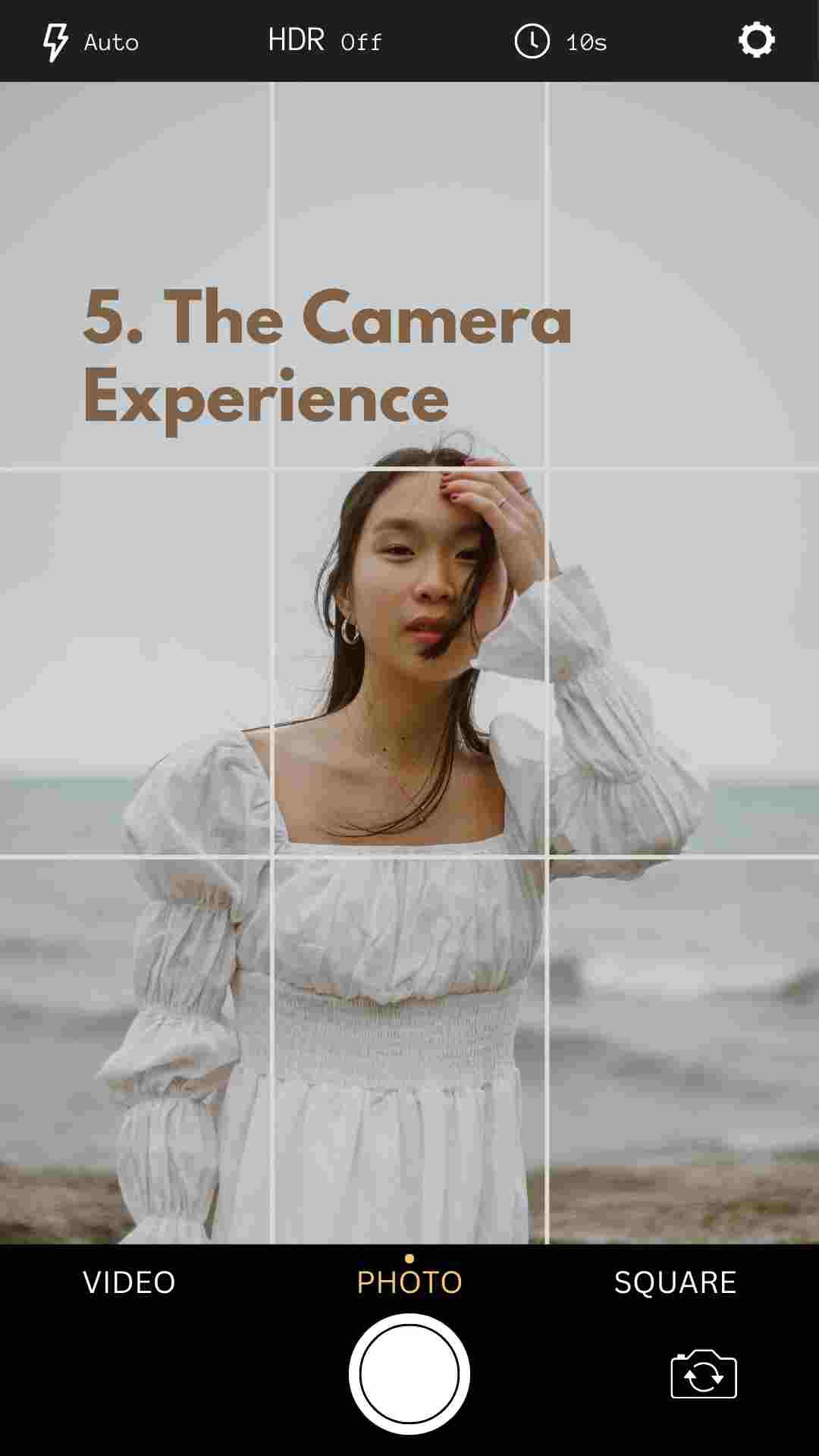
Leave a Reply